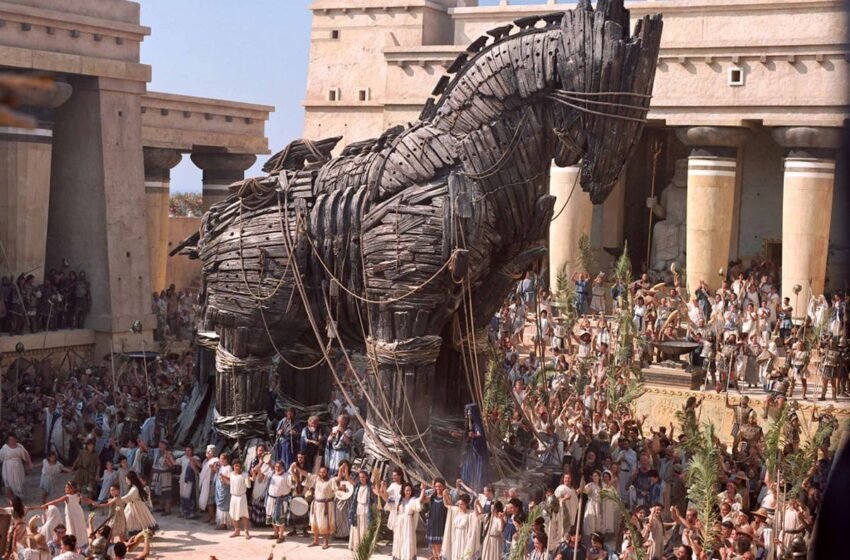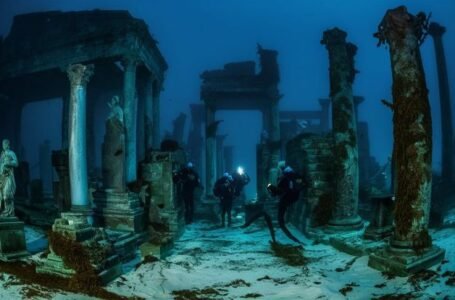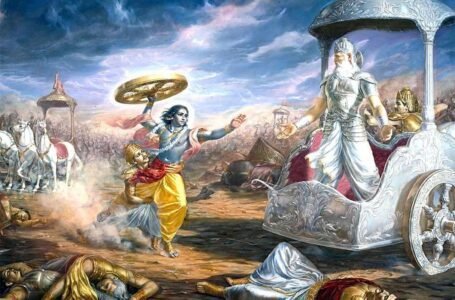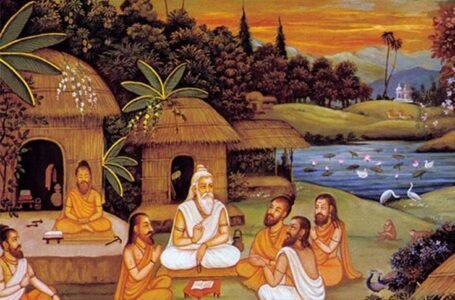The Trojan War: Between Epic Verse and Excavated Walls – Untangling Homer’s Iliad from the Archaeology of Troy

-Ananya Sinha
The history of the Trojan War has fascinated human minds for almost three thousand years, perpetuated in Homer’s Iliad as an epic of heroism, passion, revenge, and the human cost of war. It is a tale of kings and warriors—Agamemnon, Achilles, Hector, and Priam—against the backdrop of an epochal siege that was ignited by the abduction (or elopement) of Helen, “the face that launched a thousand ships.” But behind the poetry, there is a nagging historical question: did the Trojan War, in some way or another, exist? Was there an actual Troy, and if so, can archaeology distinguish between Homer’s masterful verses and fact?
In order to pose this question, we need to travel between two worlds—the literature of Homer’s epic and the material evidence excavated on the mound of Hisarlik in contemporary Turkey, where archaeologists have revealed a sequence of cities over thousands of years. The problem is in separating myth, oral tradition, and archaeology to find out where they meet and where they part company.
The Iliad – Literature or History?
Homer’s Iliad is dedicated to a compressed interval within the tenth and last year of the Trojan War, as opposed to recounting the entire conflict. The poem opens on Achilles’ dispute with Agamemnon and closes with Hector’s funeral, with the fall of Troy, the Trojan Horse, and the conclusion of the war left to subsequent epic traditions.
Though written sometime during the 8th century BCE, the Iliad takes place in a Bronze Age world of chariot war, walled cities, and warrior aristocracies—a period thought to have come to an end about 1200 BCE. This several-century gap in time implies that Homer was working with traditions passed down through generations, molding them into a work as much concerned with the human condition as with any particular historical occurrence.
Most scholars then interpret the Iliad as a combination of poetic invention and historical memory: there might have been a war, but it is Homer’s myth-making account which transcends into myth.
Finding Troy – The Hisarlik Excavations
For millennia, the location of Troy was the subject of speculation, with some regarding it as purely mythical. This all changed in the late 19th century when German businessman-turned-archaeologist Heinrich Schliemann started digging at Hisarlik, in northwestern Turkey, close to the Dardanelles. Schliemann’s discovery of great stone walls and ancient defenses led him to believe that he had discovered Homer’s Troy.
Recent archaeology, following on from Schliemann’s original (and frequently destructive) excavations, has shown that Hisarlik is a multi-layered city used from the Early Bronze Age through to the Roman era. At least nine great cities (Troy I–IX) were constructed one on top of the other over millennia, being destroyed and rebuilt in succession.
Troy VI and Troy VII – The Prime Candidates
Two layers of occupation are prime candidates for Homer’s epic Troy:
Troy VI (c. 1700–1250 BCE):
Has stunning fortification walls with sloping stone foundations and towers, in accordance with Homeric accounts of a “strong-walled” city.
Shows destruction circa 1250 BCE, perhaps due to an earthquake instead of war.
Has all the evidence of a prosperous trading city, perhaps engaging with Mycenaean Greece.
Troy VIIa (c. 1250–1180 BCE):
Provides definite signs of violent destruction—scarred remains, arrowheads, and makeshift repairs to walls indicate siege warfare.
Homes look crowded, maybe suggesting the settlement of refugees during war.
The date of destruction coincides with the time of widescale upheavals in the Eastern Mediterranean termed the Late Bronze Age collapse.
Most scholars currently prefer Troy VIIa as the preferred historical basis of the Trojan War, although Troy VI continues to be a possible candidate for the inspiration of the legend.
The Historical Context – Mycenaean and Anatolian Worlds
At the time of the Late Bronze Age, the Aegean and Anatolia were ruled by these powerful kingdoms of Mycenaean Greece in the west and the Hittite Empire in the east. Archaeological and written records show that Hisarlik (allegedly named Wilusa in Hittite sources) was a strategic location where there existed control over access between the Aegean and the Black Sea.
Hittite diplomatic records speak of a city named Wilusa and a king named Alaksandu, whom some academics associate with “Alexandros,” Paris of Troy’s other name. There also exist records of wars fought between the Hittites and a western nation known as the Ahhiyawa, perhaps identified with the Achaeans (Homer’s Greeks). These allusions indicate that political and martial tensions within the area may have ignited a genuine war later inflated into epic proportions.
Archaeological Record vs Homeric Description
The Iliad’s description of Troy comprises great gates, high towers, and great walls—all of which have been uncovered at Hisarlik, although not in the precise scale stated. The location of the city atop a hill overlooking rich plains and close to the sea corresponds to the epic’s geography.
There are however inaccuracies:
Troy of Homer is immense, but the archaeologically excavated city was small—ample for a regional capital but too small for a great city.
The bronze armor, the chariots, and the massive battles depicted in The Iliad represent a combination of Mycenaean and subsequent Iron Age warfare, demonstrating that the world of Homer is partially anachronistic.
The legendary “Scaean Gate,” through which Hector’s corpse is dragged, has reasonable archaeological counterparts, but the Trojan Horse makes no material impact—most likely it is a poetic or symbolic one.
The Oral Tradition and Epic Embellishment
The several centuries gap between the putative events (c. 1200 BCE) and Homer’s writing (c. 750 BCE) means that the narrative went through numerous generations of oral poets. Such transmission necessarily brought in exaggerations, composite figures, and mythological content.
The direct interventions of the gods—Athena directing spears, Apollo inflicting plague—are not archaeological realities but narrative devices that state the Greek ideology, in which divine purpose decides human destiny. Similarly, the individual combat duels, heroic orations, and accurate body counts are creations of epic tradition, not reportage.
The Trojan War as a Composite Memory
Most historians today think the Iliad does not tell the story of one, ten-year war but is an poetic abridgment of several wars between Mycenaean Greeks and Anatolian cities for centuries. The most dramatic of these occurrences might have been combined into one climactic siege, giving us the legend we have today.
In this perspective, the destruction of Troy VIIa might mark the last historical nucleus upon which pre- and posteventual memories converged. The causes of the war—control of trade routes, local power politics—were genuine, but the transformation of it into the epic of Achilles and Hector was a product of literature.
Beyond Homer – Later Traditions
Later ancient works, including the Aethiopis, Little Iliad, and Posthomerica of Quintus of Smyrna, developed the Trojan cycle further to incorporate Achilles’ death, the construction of the Wooden Horse, and the sack of Troy. Such events, not found in the Iliad, are now part of the common imagination but are based on no firmer historical ground.
The Aeneid of Roman poet Virgil reinterpreted the aftermath of the war again, depicting Trojan hero Aeneas as a forebear of Rome. Such reinterpretations highlight how the Trojan War moved far beyond its potential historical roots into an adaptable cultural myth.
Modern Archaeology – Caution and Revision
Excavations at Hisarlik under archaeologists such as Manfred Korfmann and subsequent teams have stressed that Troy was real and strategically important but its identification with Homer’s city should be reserved. Evidence indicates Troy as a thriving trading center with influences from Anatolia and Aegea but whether it was taken by a Greek siege is still unclear.
Korfmann’s findings also showed that lower city levels, previously neglected, significantly increased Troy’s extent in the Late Bronze Age, increasing its compatibility with the Iliad’s grandness. However, despite these discoveries, there is still a jump from archaeological Troy to Homer’s Troy, and this must be interpreted with caution.
The Enduring Appeal of the Trojan War
The Trojan War continues in our cultural memory not simply because of the potential historical foundation but because of what it stands for:
Heroism and Tragedy: The conflict between individual honor and group loss.
Moral Complexity: The causes of the war are entwined with honor, pride, and political advancement.
Fate and the Human Condition: The necessity of death, even for heroes.
These issues bypass historical authenticity, so that the Trojan War can be both a potential recollection of a Bronze Age war and an eternal reflection on the nature of human beings.
Conclusion – The War Between Myth and History
The Trojan War as it is preserved in Homer’s Iliad is neither raw fiction nor unadorned truth. Archaeology at Hisarlik verifies that there was a major city where Troy was placed to be, and that it was destroyed around the time of the war as traditionally dated. Hittite inscriptions suggest local wars that may lie behind the myth.
But the poetic account—abundant in gods, superhuman acts, and legendary moments—is part of cultural memory constructed on the basis of centuries of oral tradition. The historical truth of the Trojan War, thus, resides in a space between spade and scroll: an actual city whose destiny gave rise to tales so potent that they exceeded their temporal origins and became the common property of world literature’s timeless heritage.
In untangling the epic of Homer from the archaeological record, we learn not just more about the ancient Aegean but also more about the way history turns into myth—and how myth, reciprocally, keeps history alive.


